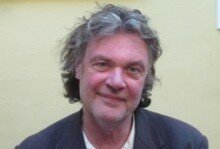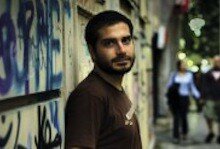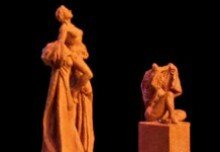On ‘Odysseus’
The primacy of the individual in a poem in which Classical Greek and traditional Hebrew elements merge into a pattern which is unmistakably modern.
Haim Gouri was born in Tel Aviv in 1923, and the outlines of his biography – agricultural training at school, apprenticeship in a kibbutz, active service at home and abroad in the Hagana, and in the commando troops during the War of Independence – are, to a large extent, typical of his generation. His first impassioned war poems ( Flowers of Fire, 1949) were immediately acclaimed, recited and sung as a poignant expression of the war generation. Gouri felt himself to be the representative of a time when “people spoke in the first person plural.” But the post-war years, which ushered in the inevitable emotional anti-climax together with a host of socio-economic problems, did much to destroy the mood of national unity that had nourished Gouri’s verse. The “first person plural” gave way to the primacy of the individual.
The sense of estrangement, disillusion, and loneliness (which characterizes much of Gouri’s later poetry) pervades ‘Odysseus’ (1960), though the poem is not to be read allegorically.
Classical Greek and traditional Hebrew elements merge into a pattern which is unmistakably modern. The wanderer returns after many years; but this time-span is conceived in a manner essentially different from that of the classical tale, which grants its heroes everlasting youth and timelessness and makes possible a complete recognition and reconciliation. In the world of Gouri’s Odysseus, changes are irrevocable. Odysseus is not a hero, but a “tired wanderer” with a “tired heart” who, having been oblivious to time’s passing, finally reaches his native town only to find himself utterly alien. Perhaps he even implies that he himself is a recurring “mistake”, using the actual words of an everyday proverb.
Homer’s Odysseus was brought, while asleep, to his native island, and on waking at first did not recognize it. But Gouri’s reference is to an old Hebrew legend about a famous sage, Honi the Circle-Maker. In pondering a well-known verse on the Babylonian exile – “When the Lord brought back those who returned to Zion, we were like them that dream” (Psalm 126) – Honi wondered: Is it possible for a man to dream for seventy years? Some time later Honi actually fell asleep only to awake seventy years later and to learn that his son had long been dead. Encountering only strangers, he told them: “I am Honi”. They did not believe him and they scoffed at him. In his loneliness, he asked God for mercy and he died.
Gouri’s allusions to the legend appear in the Hebrew as early as line 7. Three lines later Odysseus is clearly identified with Honi and a further allusion is perhaps found in [line] 16, contrasting the circle that Honi is said to have fixed around himself when he prayed for rain with the quickly dispersing circle of children who surround Odysseus. But the surest links are in the situation and tone. The people Odysseus meets speak “different Greek”. He cannot recognize anything as he looks about him – except the sky. Though the curious children draw close to him, the adults, quite unconcerned with his fate, draw them away; all the human beings abandon him, to retire to their lighted homes.
But Odysseus shows no bitterness. He finds momentary consolation in dew, water, and wind, and meets with seeming hospitality: “water came, and bathed his feet, like old Euryclea”, the nurse of Homer’s account, who while bathing his feet recognized him by his old scar. But Gouri’s Odysseus, like the legendary Honi, never experiences recognition. The water, “as water does”, rushes by and down the slope, never “seeing” the old scar of his suffering.
A restrained tone of resignation pervades the poem. Most of the words and expressions are conversational and the style is closer to the simplicity of the Legends than to the loftiness of biblical poetry. The lines vary in length; there is no fixed meter. Structure derives from syntactic patterns, repetitions, alliterations (as in line 3), and a subtly balanced rime scheme. The first two lines of each stanza are unrhymed but the third rhymes throughout (the assonance in line 18 has the value of a rime). The reader of the Hebrew cannot escape the particular emphasis placed upon these rimes – sky, water, meanwhile, eyes, sky, house – even though they are separated.
From The Modern Hebrew Poem Itself: a New and Updated Edition. Edited by Stanley Burnshaw, T. Carmi, Susan Glassman, Ariel Hirschfeld and Ezra Spicehandler. Detroit: Wayne State University Press, 2003, 160-162








